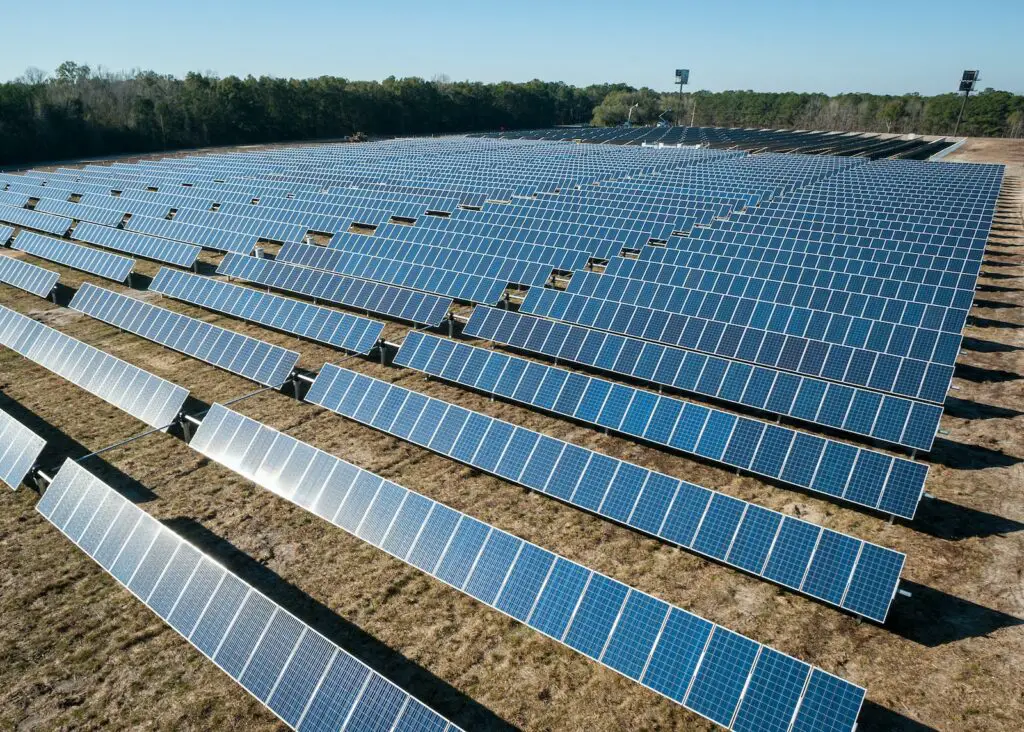According to the Solar Energy Industries Association, solar power stands as the cleanest and most abundant source of renewable energy at our disposal. This energy, hailing from the sun, is transformed into either electrical or thermal energy.
On a large scale, solar farms employ active-capture systems to establish a central station akin to a conventional power plant, harnessing this energy resource.
The aspiration behind harnessing solar energy is to curtail if not wholly eradicate, our reliance on fossil fuel resources.
There’s a finite amount of oil or natural gas available, and they might deplete one day.
In contrast, if we were to run out of sunlight, it would signify a dramatic shift in our planet’s life.
Below are the main advantages and disadvantages of solar farms to ponder upon.
List of the Pros of Solar Farm
Solar farms harness sunlight, a reliable and abundant energy resource, to generate either electrical or thermal energy on a large scale.
They play a pivotal role in reducing dependency on fossil fuels, aligning with the global shift towards sustainable energy.
Here’s a list of the key advantages of solar farms:
Reliable Energy Resource:
The sun, with an estimated lifespan of several billion years, is a dependable energy source unlike depleting fossil fuels.
Solar energy, being abundant, can potentially fulfill the world’s energy needs at current consumption levels for a year daily.
Global Utility:
Every nation has regions with ample sunlight, making solar farms a viable energy solution globally.
Despite variations in sunlight exposure, solar farms can significantly benefit virtually all countries.
Low Maintenance:
Post-installation, solar farms require minimal maintenance, mainly occasional cleaning to maintain productivity.
Some solar farms with moving parts for maximizing sunlight exposure might require additional maintenance, yet it’s minimal compared to standard installations.
Zero-Emission Energy Resource:
Although petroleum is used in photovoltaic panel production, solar farms result in net emission savings compared to the continual combustion of fossil fuels for energy.
Once operational, solar farms produce no emissions, contributing to a reduction in greenhouse gases.
Community Benefit:
Solar farms provide an avenue for communities, including those with properties unsuitable for solar panel installations, to benefit from solar energy.
They help in reducing overall emissions without necessitating property modifications, thus promoting communal adoption of solar power.
Versatile Applications:
Solar energy, being versatile, supports various applications like electricity generation, water distillation, and even powering satellites.
With suitable inverters and battery storage, solar farms can cater to a wide range of power needs without altering lifestyle routines significantly.
List of the Cons of Solar Farm
Solar farms, while a robust solution for renewable energy generation, come with a set of challenges stemming from their scale, environmental footprint, and financial demands.
Here are the key challenges associated with solar farms:
Space Consumption:
Solar farms necessitate vast tracts of land, usually in rural areas, to house the extensive array of photovoltaic panels for meaningful energy generation.
For instance, generating 1 megawatt requires about 2.5 acres, and some large solar farms, like the one in Kamuthi, Tamil Nadu, sprawl over 10 square kilometers.
Weather Dependency:
The energy output of solar farms is contingent on weather conditions, with cloud cover and shade drastically reducing energy production.
Lack of energy storage facilities can exacerbate the inconsistency in energy supply, impacting homes and businesses reliant on solar energy.
Environmental Impact:
The construction of solar farms alters the landscape and local habitats, potentially affecting wildlife adversely.
The vast swathes of reflective panels may also be aesthetically displeasing to some individuals, further signifying the environmental trade-off.
High Initial Costs:
The hefty price tag associated with solar farm construction, estimated at $3 million per megawatt in the US, poses a significant financial hurdle.
Despite potential tax subsidies and incentives, the capital expenses often surpass the financial capacity of average communities.
Energy Storage Costs:
To ensure a round-the-clock energy supply, solar farms require storage systems, which come with substantial costs.
Solar batteries, an example of energy storage systems, range from $400-$750 per kilowatt hour, with notable options like the Tesla Powerwall 2.0 priced at $5,500 for 13.5 kilowatt hours of storage.








